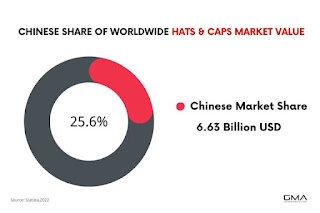Look at this video first to understand your challenges hehe.
China, with its dynamic economy and evolving consumer base, has long been recognized as a powerhouse in the global fashion and cosmetics industry. As its middle class grows, so does its appetite for luxury, trends, and new-age beauty products. However, what truly sets China apart in recent years is its transformative advertising landscape, shaped by technology, culture, and a new generation of consumers. In this blog post, we'll delve into the current state of fashion and cosmetics consumption in China and explore the emerging advertising trends that brands must be aware of.
A New Era for Fashion and Cosmetics in China
The Chinese consumer has come a long way. Gone are the days when Western brands could easily dominate the market with their global reputation alone. Today’s consumers, especially the younger generation, are well-traveled, digitally savvy, and highly discerning.
Local is the New Global: While international brands like Chanel and Estée Lauder still hold considerable sway, local brands are rapidly gaining traction. Companies like Perfect Diary and Li Ning are resonating with Chinese consumers through their deep understanding of local culture, values, and aesthetics.
Digital Transformation: The e-commerce boom has revolutionized how consumers discover, evaluate, and purchase products. Platforms like Tmall, JD.com, and Xiaohongshu (Red) have become the new hubs for fashion and cosmetics enthusiasts.
Personalization
Personalization Over Mass Production: There’s a growing demand for personalized products, where consumers want items tailored to their unique preferences and skin types.
Trends in MARKETING: Navigating the Digital Landscape
With the rise of digital platforms, advertising in China has taken on a new dimension. Brands are now realizing that traditional methods may not suffice in capturing the attention of the modern Chinese consumer.
Influencer Collaboration: headack I know
Key Opinion Leaders (KOLs) play a pivotal role in shaping purchasing decisions. Their vast following, combined with a trusted voice, makes them invaluable assets for brands looking to expand their reach.
Interactive Campaigns: Livestreaming has emerged as a popular advertising trend. From product launches to fashion shows, brands are engaging consumers in real-time, offering a more immersive shopping experience.
Localized Storytelling
Localized Storytelling: More than ever, brands are focusing on crafting narratives that resonate with the Chinese culture and values. This could be through festivals, historical tales, or modern-day success stories.
Data-driven Decisions: The digital age has made it easier for brands to access consumer data. This data is instrumental in understanding consumer behavior, preferences, and creating targeted ad campaigns.
Social Commerce: Social media platforms, especially WeChat and Xiaohongshu, are blurring the lines between socializing and shopping. Brands are integrating shopping features within these platforms, making it seamless for consumers to browse and purchase.
Challenges Ahead: Finding the Right Balance for Brands
Commlicated I know
While opportunities abound, brands must also be aware of potential pitfalls. The Chinese market, with its diverse consumer base and regional nuances, can be complex to navigate.
Cultural Sensitivity: Brands must be cautious and respectful of local sentiments. Any misstep, especially those perceived as cultural insensitivity, can lead to backlash and loss of trust.
Over-reliance on Digital: While digital is dominant, offline experiences, such as pop-up stores and experiential events, still have their place in the consumer journey.
Sustainability Concerns: The modern Chinese consumer is becoming increasingly eco-conscious. Brands need to address sustainability, both in their products and their advertising narratives.
In Conclusion from your Blog
China's fashion and cosmetics market is a goldmine of opportunities, but it requires a nuanced approach. With the right balance of cultural understanding, digital innovation, and authentic storytelling, brands can thrive in this vibrant landscape. The key lies in listening to the consumer, adapting to the ever-changing trends, and staying true to one's brand essence.








